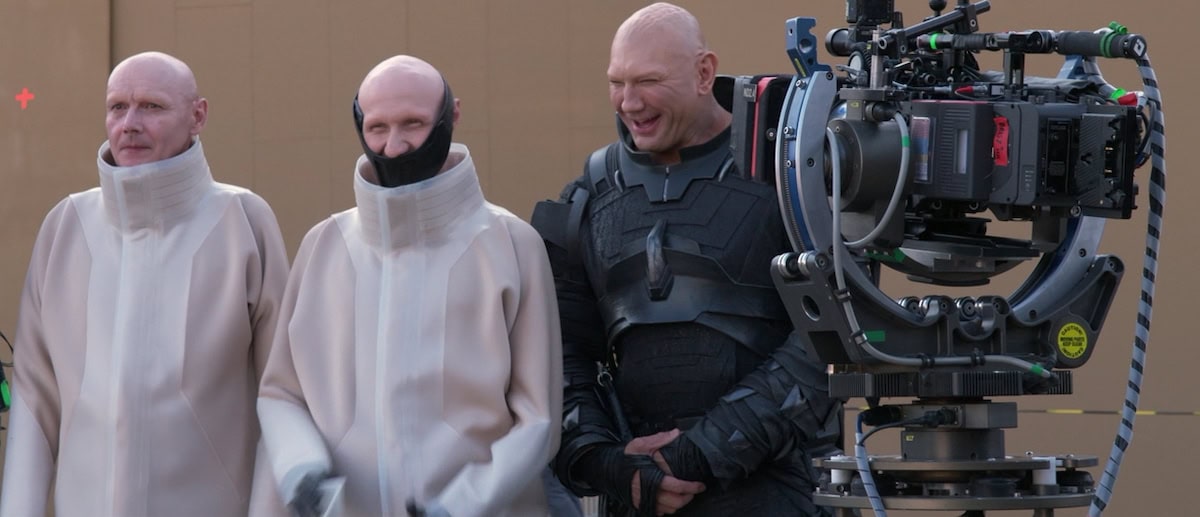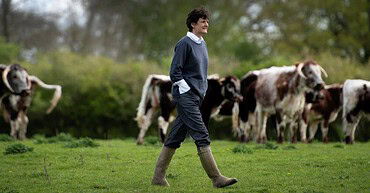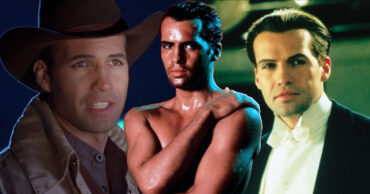Denis Villeneuve’s commitment to realism in Dune: Part Two is painstakingly evident in his depiction of the sandworms. With an eye for authenticity, Villeneuve has managed to bring these massive, desert-dwelling creatures to life in a manner that resonates more with reality than science fiction grandeur.
Villeneuve’s Quest for a Genuine Feel
When asked about his creative choices, Villeneuve emphasized, I wanted a genuine feel, not a science fiction feel. It’s important for big-budget movies these days to try and make them look real.
This sentiment drove the entire process behind the visual representation of sandworms.

An Authentic Environment
The design and creation of the sandworms were grounded in realism. The sandworms have a circular mouth, crystalline teeth, and a thick hide perfectly adapted to the desert conditions on Arrakis. This attention to detail was based on extensive research and concept art iterations that aimed to match the creature’s environment.
The Art Behind the Realism
The concept art played an integral role in bringing these beasts to life. Early designs illustrate just how much effort went into ensuring every feature was believable. The hide, the teeth, even the movements were carefully crafted to create a sense of realism.

Visual Effects Work Wonders
The visual effects team provided valuable insights into the creation of the sandworms. Their meticulous work ensured that the creatures didn’t feel out of place. Instead, they’re an organic part of the harsh landscape of Arrakis.

A Thoughtful Portrayal
Villeneuve’s approach is also evident in how he chose to showcase these creatures within the film. In Part One, viewers got only fleeting glimpses of their massive forms, adding an air of mystery and keeping them grounded in reality rather than exaggerated sci-fi tropes.
The Making Of The Sandworms
This thorough process was not without its challenges. The sandworm underwent several design iterations before reaching its final form. According to production designer Vermette, What’s fascinating about the book, for the design aspect of it, is that it doesn’t give you all the answers.
This allowed Villeneuve’s team to focus on making something uniquely believable.

Narrative Depth
Part Two continues Villeneuve’s dedication to creating a realistic cinematic universe intertwined with themes of colonialism, environmentalism, and religion. His intention for audiences to experience these elements as part of a coherent whole shines through his specific stylistic choices.
A Bold Creative Choice
This time, however, sandworm interactions are shown more explicitly yet still retain their realistic portrayal. In certain scenes from Dune 2, audiences are granted full views of these enormous creatures—a testament to Villeneuve’s vision and dedication.
The scene featuring a highly realistic sandworm reinforces this commitment to authenticity, aligning perfectly with Villeneuve’s vision.
As Villeneuve suggests,It gives you just the right amount of pieces of the puzzle to help you understand what the realities of those planets are.
 Follow Us
Follow Us





